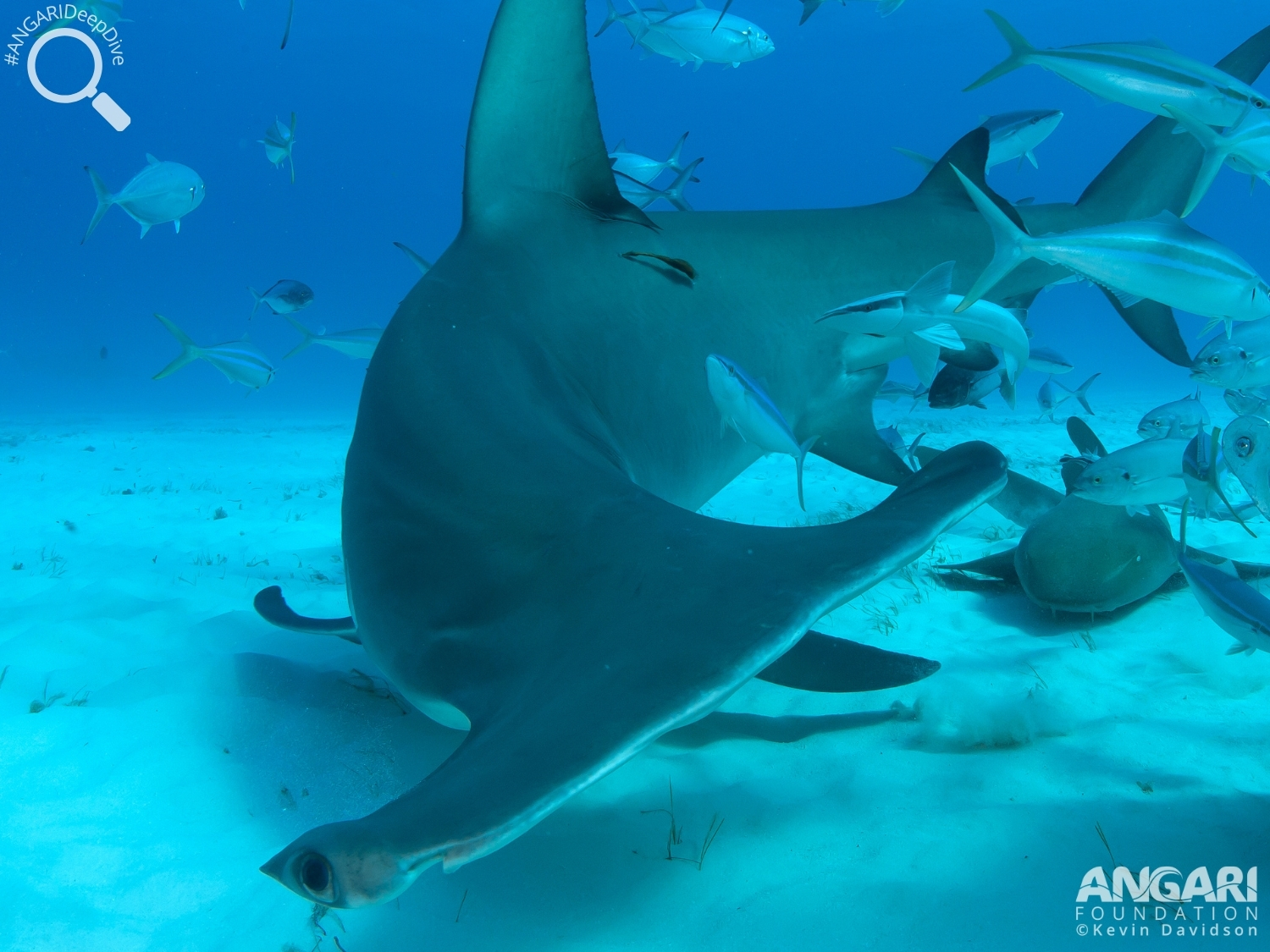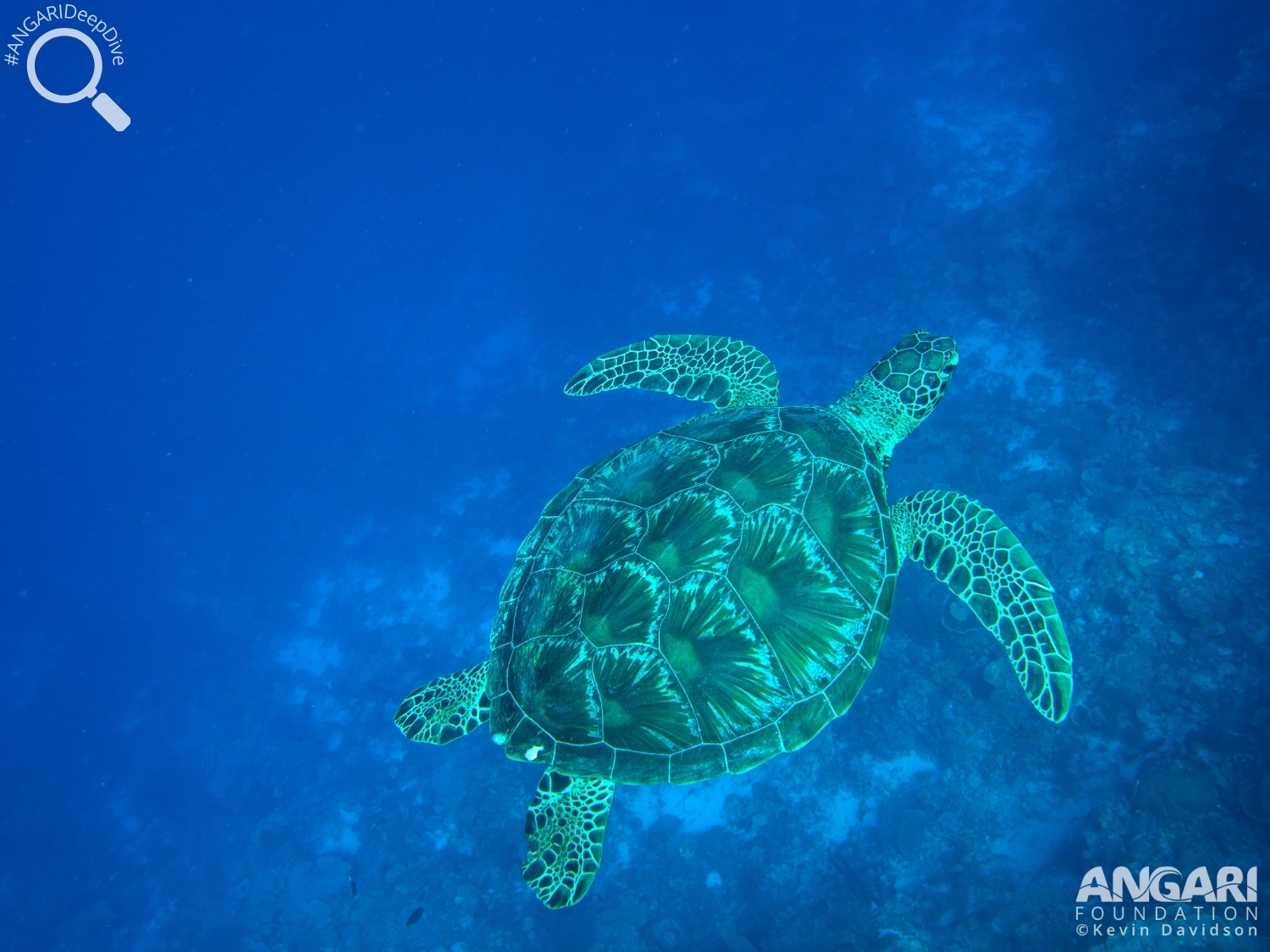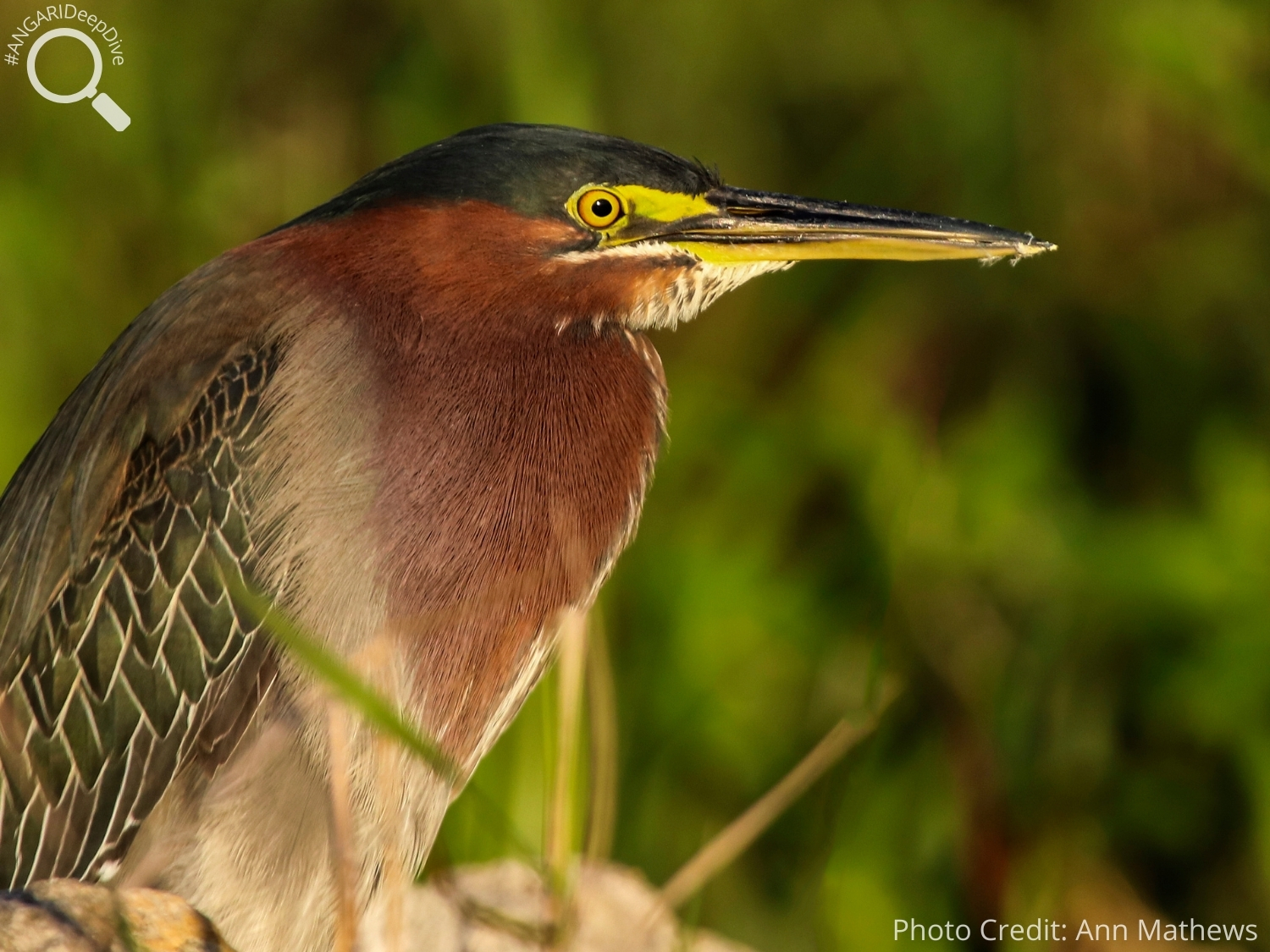The great hammerhead shark (Sphyrna mokarran) is an apex predator within the shark community and…
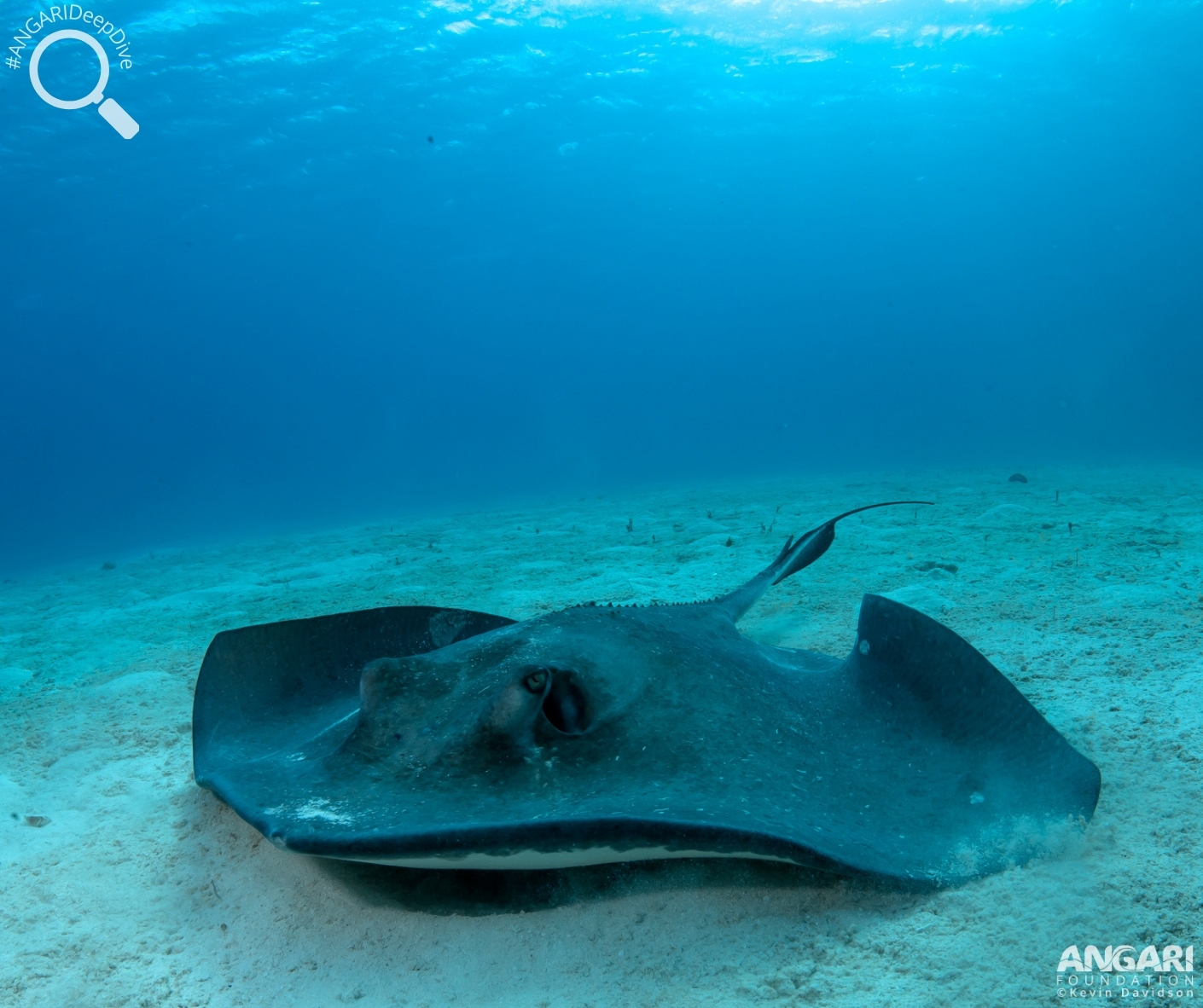
Southern Stingray (Hypanus americanus)
The southern stingray (Hypanus americanus) is a species of ray native to the western Atlantic Ocean. This ray species is commonly found buried under the soft sediment with only its large eyes uncovered which can make them hard to spot in the wild. It is important to be careful where you step, as this ray can use its sharp barbed tail as a form of protection if it feels threatened. Dive into the world of the southern stingray with the below facts.
#1: How big are southern stingrays?
The southern stingray can grow to be a very large ray and can weigh up to 200 pounds with a wingspan of 5 feet. Male southern stingrays are on average smaller than the female southern stingrays.
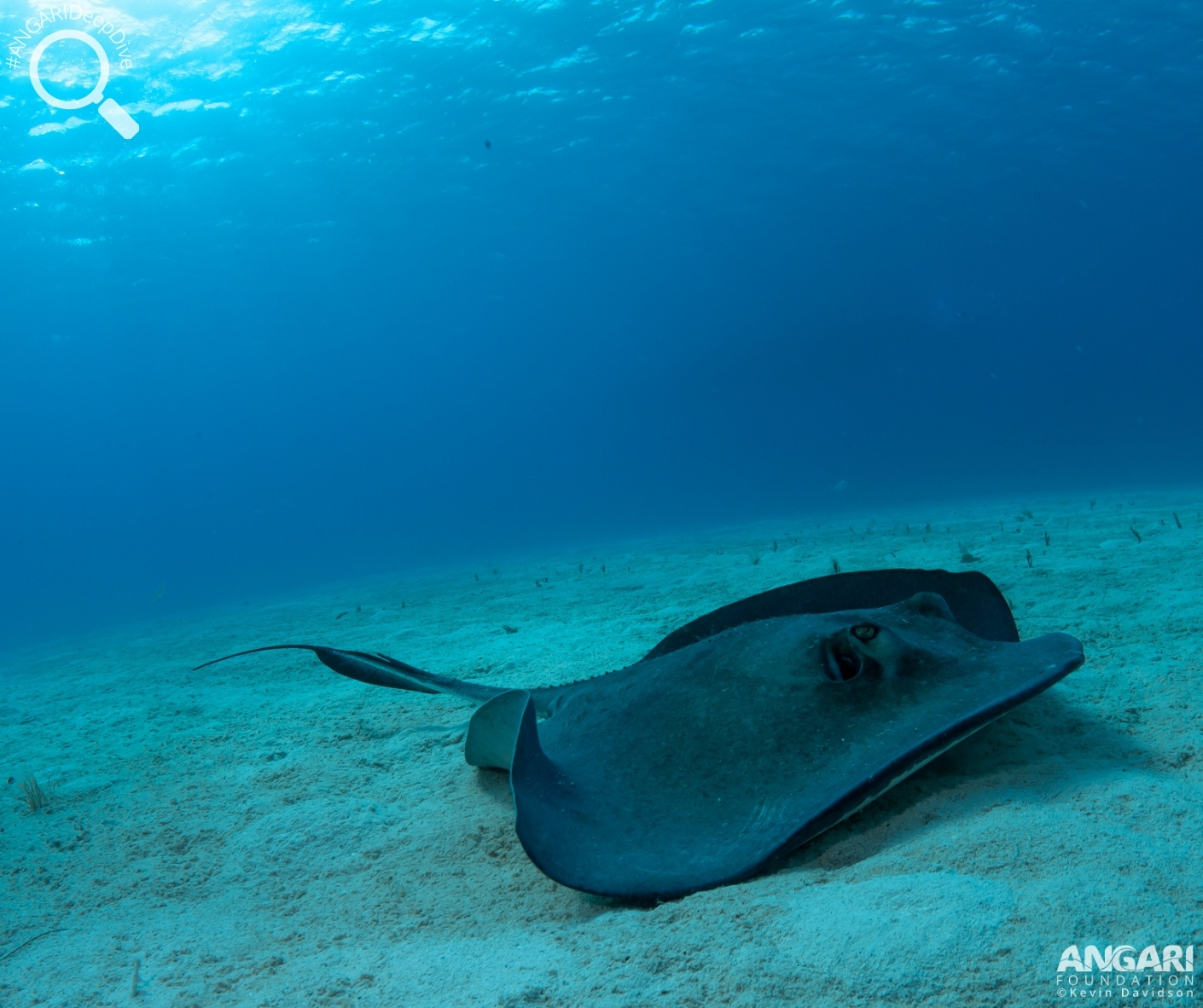
#2: How to identify a southern stingray.
Southern stingrays can be identified by their diamond shaped bodies that have brown to black coloring on top and a distinct white underside. They also have a noticeably long tail that can grow to be twice the length of their body.
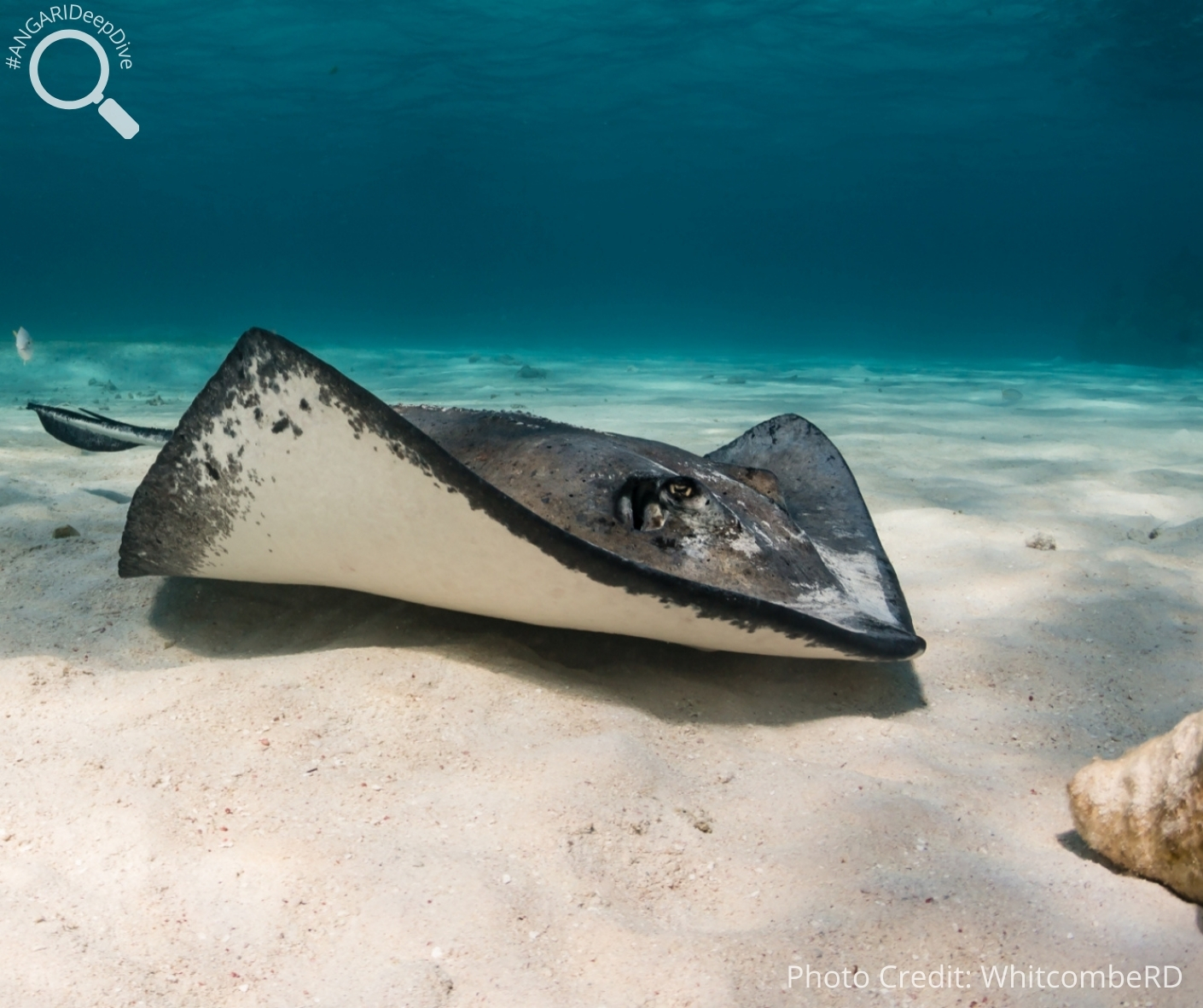
#3: Where can you find a southern stingray?
Southern stingrays are a coastal species found in tropical and sub-tropical waters. They are commonly found in bays, estuaries and river mouths at shallow depths but have been found in depths up to 180 feet.

#4: Hunting methods of a southern stingray.
A southern stingray’s mouth is located on the underside of its body and this allows them to hunt along the seafloor. When southern stingrays are foraging they blow water or flap their wings to displace the seafloor sediment and expose prey.
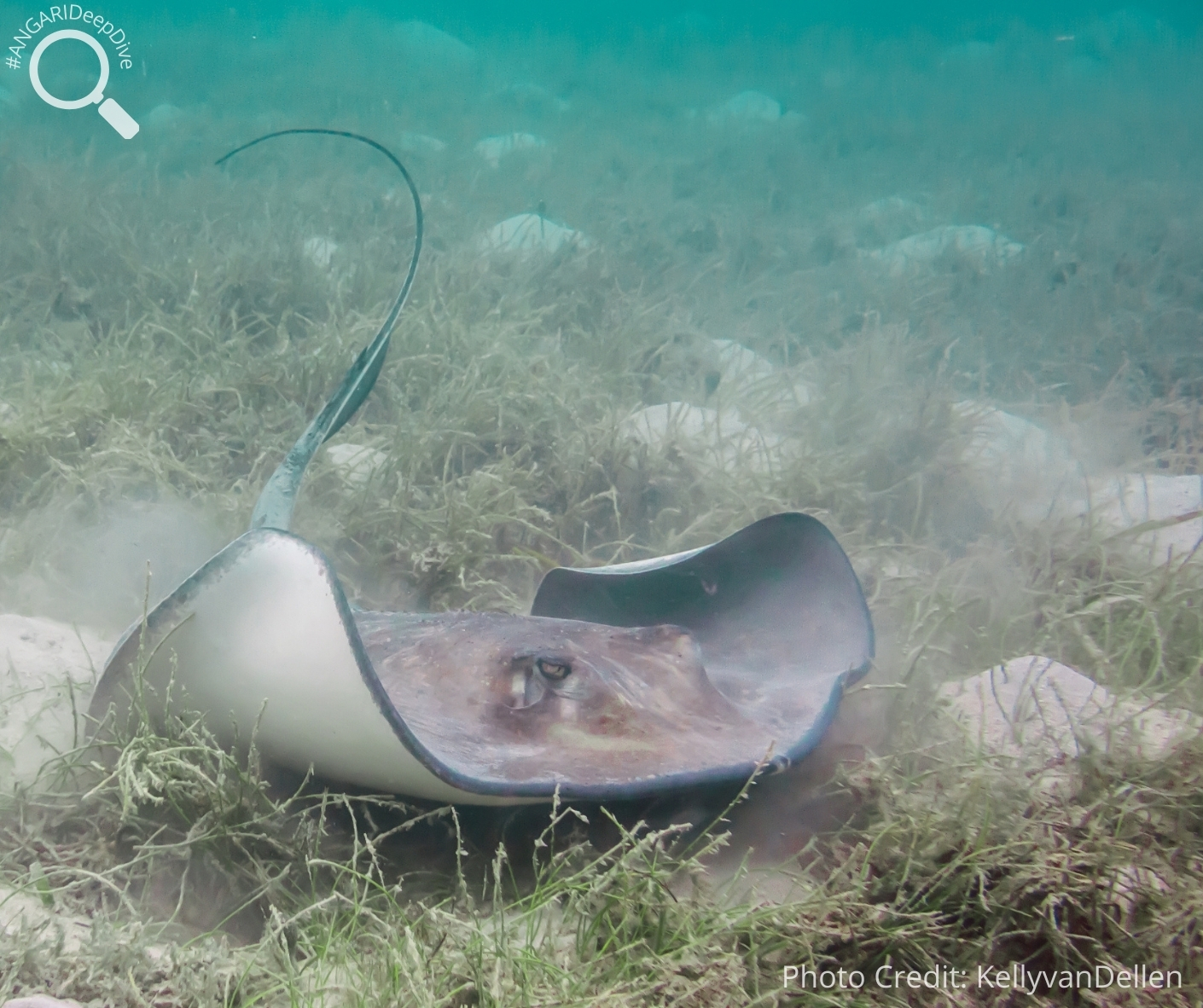
#5: What does the southern stingray eat?
Common prey for a southern stingray includes many different species of shrimp, crabs and other crustaceans. As it slowly grazes along the seafloor, the ray relies on electroreception (the ability to detect natural electric impulses emitted from other animals), touch and a strong sense of smell to detect their prey.
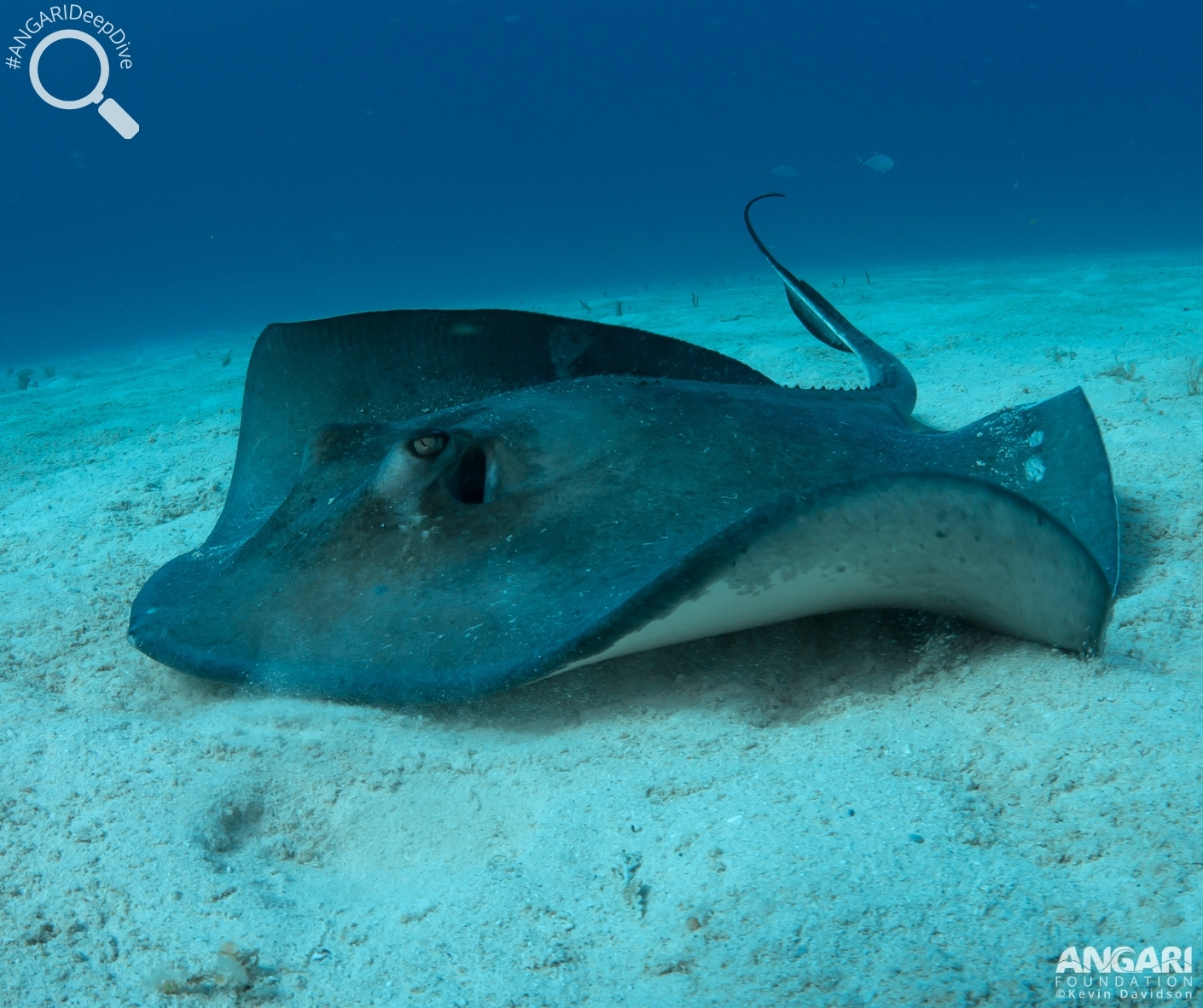
#6: Does the southern stingray have any predators?
Although the southern stingray can be a large ray they do still have predators that they need to be wary of. It has been documented that this ray species is preyed upon by both the scalloped hammerhead and the great hammerhead shark which use their hammer-shaped head to pin the ray to the floor.
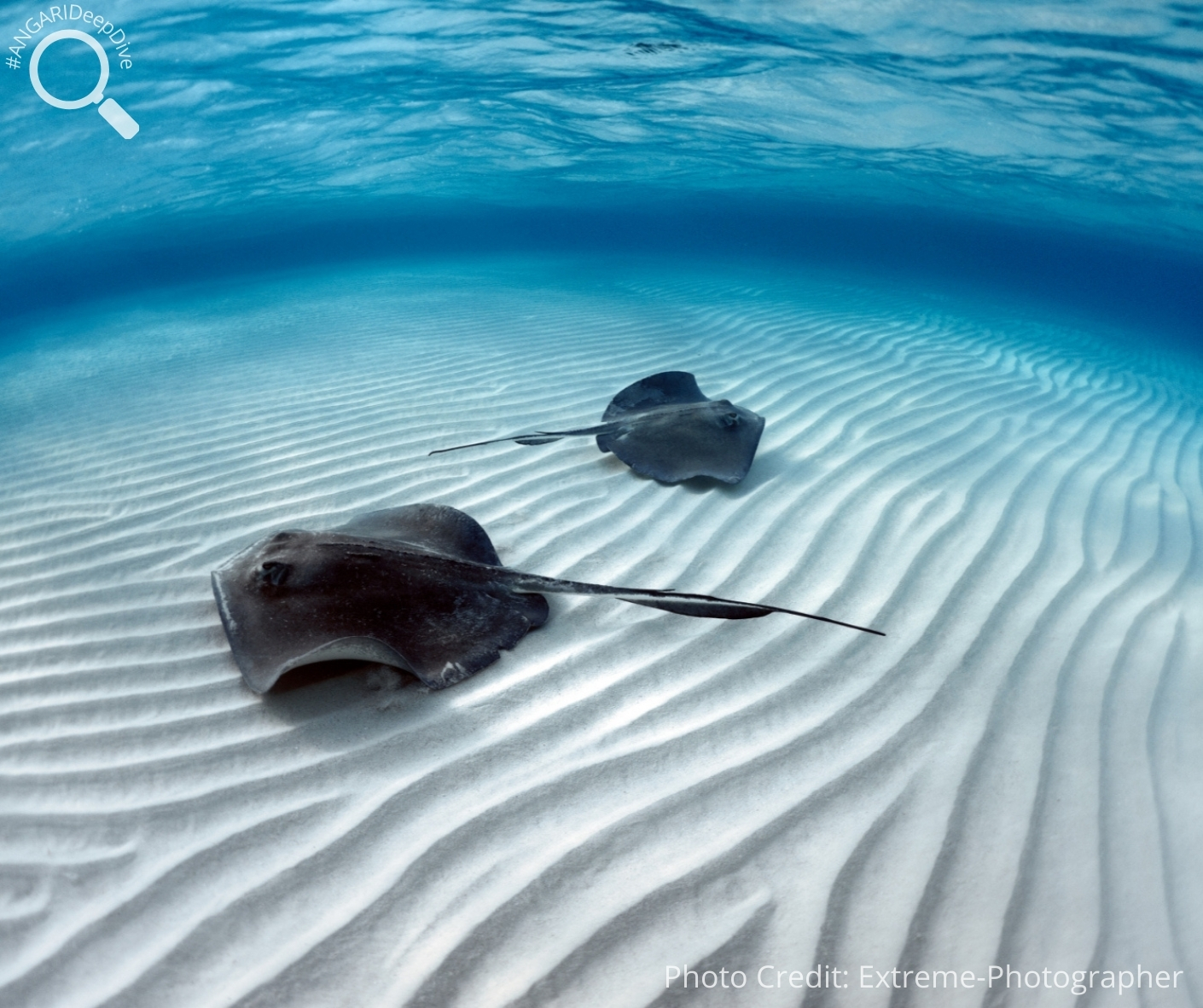
#7: Southern stingrays are born ready!
We know that the southern stingray uses its barbed tail as a form of defense, however what is unique is that they are able to use their barbed tail as soon as they are born!

#8: Southern stingrays do not just use their gills to breathe.
Southern stingrays spend a lot of time buried under the sand which can make breathing through their gills difficult as they are covered. When buried the ray pumps water through openings on the top of their head just behind their eyes, known as spiracles, instead.

#9: Southern stingray offspring.
A southern stingray mother carries her fertilized eggs inside her body until they hatch and then gives birth to live pups. This process makes them an ovoviviparous species.
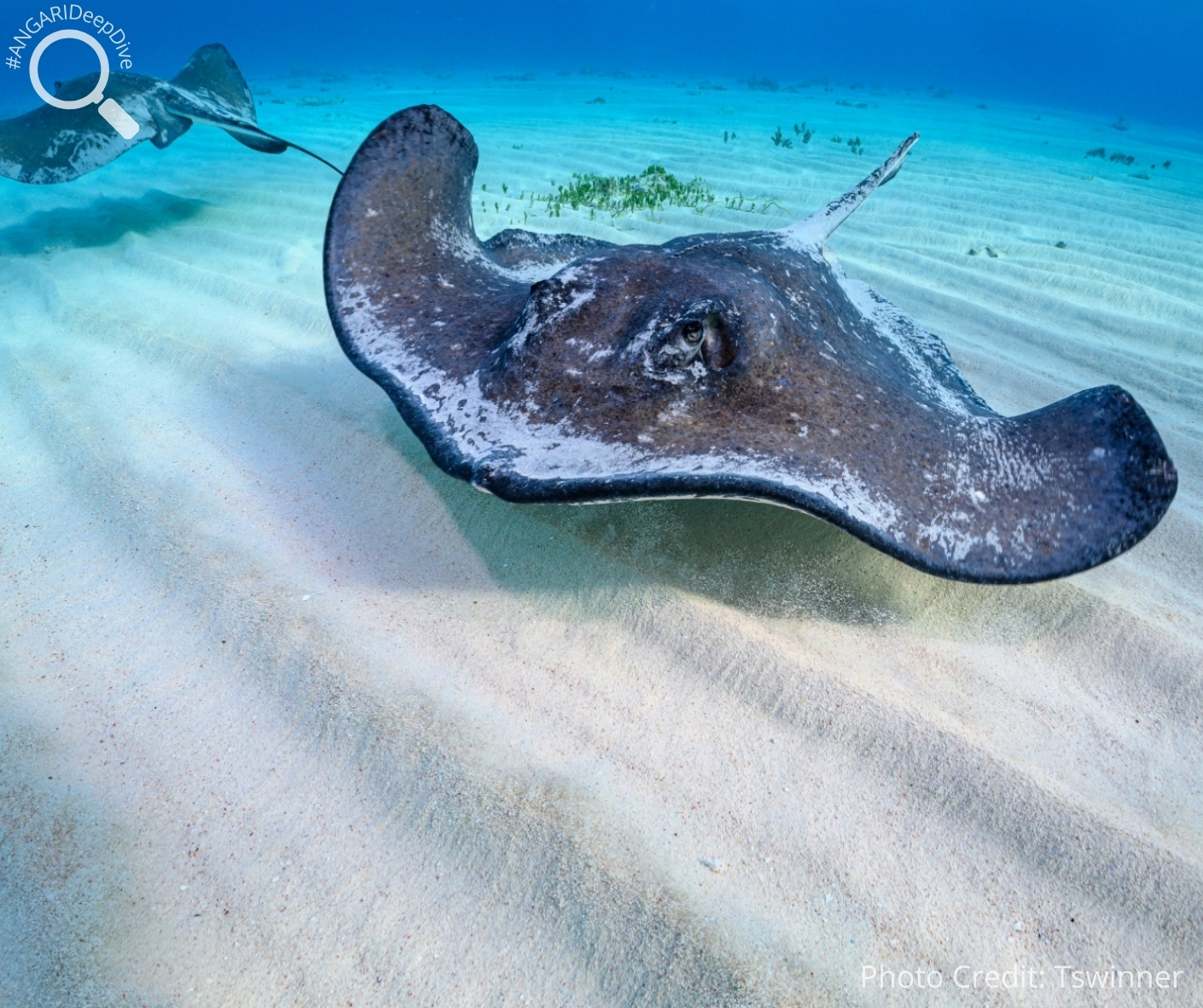
According to the IUCN red list of threatened species the southern stingray has become a near threatened species and their population continues to decline. It is suspected that over the past 30 years their population has decreased by 20-29% with their largest threat coming from overfishing and habitat loss due to coastal development. We should continue to fish using responsible fishing practices to ensure we are doing our part to help this marine species.
Additional Southern Stingray Resources:
1. Southern Stingray 3D Model
2. Southern Stingray – Oceana
3. Southern Stingray, Hypanus americanus – Florida Fish and Wildlife Conservation Commission

